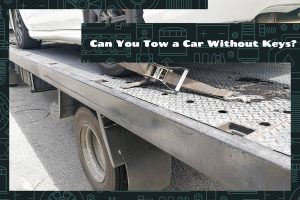The Ford Escape has been a popular choice among compact SUV enthusiasts since its introduction in 2001. One essential aspect of a vehicle that often goes unnoticed is its bolt pattern, which plays a crucial role in ensuring compatibility between the wheels and the vehicle itself.
The bolt patterns for Ford Escape throughout the years are as follows:
- 1st Gen (2001-2007)—5 × 4.5 inches (5 × 114.3 mm)
- 2nd Gen (2008-2012)—5 × 4.5 inches (5 × 114.3 mm)
- 3rd Gen (2013-2016)—5 × 4.25 inches (5 × 108 mm)
- 3rd Gen (2017-2019)—5 × 4.25 inches (5 × 108 mm)
- 4th Gen (2020-Present)—5 × 4.25 inches (5 × 108 mm)
This article provides an exploration of the bolt pattern on a Ford Escape. We will discuss what bolt patterns are, why they matter, and how they’ve evolved throughout the years.
Understanding Bolt Patterns

Bolt patterns have two main parts—the number of holes (or bolts) and the distance between them.
For example, a 5 ×4.25-inch (5 × 108-mm) bolt pattern means there are 5 holes and the distance between them is 4.25 inches or 108 millimeters. The purpose of a bolt pattern is to make sure the wheel fits securely onto the vehicle. If the pattern doesn’t match, the wheel won’t fit or could cause problems while driving.
Types of Bolt Patterns
There are three main types of bolt patterns:
- Even bolt patterns—These have an equal number of holes, like 4 or 6. To measure the distance between holes, simply measure from the center of one hole to the center of the opposite hole.
- Odd bolt patterns—These have an odd number of holes, like 5. To measure the distance, measure from the center of one hole to the midpoint between the two opposite holes.
- Center lock patterns—These are less common and have only one central hole. They use a single nut to secure the wheel.
How to Measure Bolt Patterns
To measure a bolt pattern, follow these steps:
- Count the number of holes on your wheel.
- If the number is even, measure the distance from the center of one hole to the center of the opposite hole.
- If the number is odd, measure from the center of one hole to the midpoint between the two opposite holes.
- Write down your bolt pattern as the number of holes followed by the distance measurement, like 5 × 4.25 inches or 5 × 108 mm.
Bolt Patterns in Ford Escape Generations
Different Ford Escape models over the years have featured different bolt patterns. In this section, we will explore the bolt patterns used in various generations of the Ford Escape and their respective models.
First Generation (2001-2007) and Second Generation (2008-2012)
The first-generation Ford Escape was introduced in 2001 and continued until 2007. This generation used the same bolt pattern throughout its production. The bolt pattern for these models was 5 × 4.5 or 5 × 114.3. This means that there are five holes, and the distance between them is 4.5 inches or 114.3 millimeters.
The second-generation Ford Escape was produced between 2008 and 2012. The bolt pattern for these models remained 5 × 4.5 or 5 × 114.3, just like the first generation.
Third Generation (2013-2019) and Fourth Generation (2020-Present)
The third-generation Ford Escape was introduced in 2013, featuring a new design and updated features. This generation saw a change in the bolt pattern during its production.
- 2013-2016 Models—These models switched to a 5 × 4.25 or 5 ×108 bolt pattern. This means there are five holes, and the distance between them is 4.25 inches or 108 millimeters.
- 2017-2019 “Refreshed” Models—The bolt pattern for these models remained the same as the 2013-2016 models, using a 5 × 4.25 or 5 × 108 pattern.
The latest generation of the Ford Escape started in 2020 and continues to be produced today. The bolt pattern for these models is 5 × 4.25 or 5 × 108, the same as the third generation.
Changing Bolt Patterns on a Ford Escape

If you’re wondering whether you can change the bolt pattern on your Ford Escape, the answer is yes, you can.
Some people may want to change the bolt pattern on their Ford Escape, usually to use different wheels or tires. In this section, we’ll discuss the reasons for changing bolt patterns, the process, and the risks and considerations involved.
Reasons for changing bolt patterns
There are a few reasons why someone might want to change their Ford Escape’s bolt pattern:
- Upgrading wheels—You might find a set of wheels you like, but they don’t have the right bolt pattern for your vehicle.
- Customization—You may want to modify your vehicle’s appearance or performance with unique wheel and tire combinations.
- Compatibility—You might have wheels from another vehicle that you want to use on your Ford Escape.
The process of changing bolt patterns
To change the bolt pattern on a Ford Escape, you can use wheel adapters or replace the wheel hub. Here’s a brief explanation of each method:
- Wheel adapters—Wheel adapters are metal plates that fit between the vehicle’s hub and the wheel. They have holes that match both the original bolt pattern on the car and the new bolt pattern on the wheel. Using adapters is a more straightforward and cost-effective method, but they can add extra weight to the vehicle and may affect its handling.
- Replacing the wheel hub—This method involves removing the original wheel hub and installing a new one with the desired bolt pattern. This process is more complex and expensive but provides a more permanent solution.
Risks and considerations when modifying bolt patterns
Changing your Ford Escape’s bolt pattern comes with some risks and considerations:
- Safety—Incorrect installation of wheel adapters or wheel hubs can lead to wheels coming loose while driving, posing a significant safety risk.
- Vehicle performance—Changing the bolt pattern can affect the vehicle’s handling, braking, and overall performance.
- Warranty—Modifying the bolt pattern may void your vehicle’s warranty.
- Cost—The process can be expensive, especially if you choose to replace the wheel hub.






